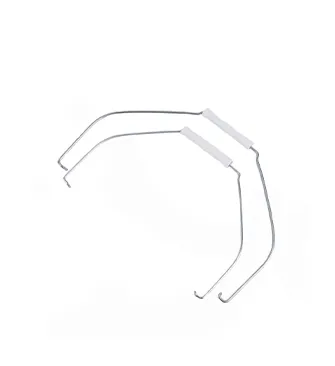-
 Phone:
Phone: -
 Email:
Email:

Understanding the Uses and Applications of Baling Wire in Various Industries
What is Baling Wire Used For?
Baling wire is a versatile and essential material used primarily in the packaging, recycling, and agricultural industries. This strong, durable wire is designed for bundling various products together to make handling, transportation, and storage more efficient. Whether dealing with hay, cardboard, or other materials, baling wire plays a crucial role in ensuring that these items are secured and organized.
Understanding Baling Wire
Baling wire comes in various gauges, lengths, and materials, including steel and plastic, making it suitable for different applications. Steel baling wire is popular for its strength and durability, allowing it to withstand heavy loads and harsh conditions. It is typically available in annealed (soft) and high tensile (stronger) versions, each serving specific needs in baling operations. On the other hand, plastic baling wire offers a lighter alternative that can be easier to work with, though it may not provide the same level of strength as its metal counterpart.
Key Applications of Baling Wire
1. Agriculture In the agricultural sector, baling wire is primarily used for securing hay bales. Farmers rely on baling wire to hold tightly packed bales together for easy transport and storage. Different sizes of baling wire are catered to various types of bales—whether they are round, square, or large bales. Properly secured bales are easier to stack and reduce the risk of spoilage during storage.
2. Recycling Baling wire plays a significant role in recycling operations. It is commonly used to bundle recyclable materials like cardboard, plastic, and metals into compact bales for transportation to recycling plants. These bales are easier to handle and can be shipped in larger quantities, making the process more efficient and cost-effective. The use of baling wire in this context is vital for promoting sustainable practices and reducing waste.
what is baling wire used for

3. Manufacturing In manufacturing settings, baling wire is often used to secure components and materials during transport and storage. For example, metal parts or fabric rolls may be bundled together using baling wire to keep them organized and prevent damage. This use is essential in ensuring that materials remain intact and do not get lost or damaged in transit.
4. Construction Baling wire has applications in construction as well. It can be used for various purposes, including tying rebar together, securing temporary structures, and bundling materials. Its flexibility and strength make it a convenient choice for on-site needs, enhancing productivity and ensuring safety.
5. Packaging In the packaging industry, baling wire can be used to secure larger items or bundles of smaller products. It helps keep items together during shipping, ensuring that they reach their destination without being damaged or separated. This application is especially important in shipping industries, where packaging efficiency plays a significant role in cost management.
6. Crafts and DIY Projects Beyond industrial uses, baling wire is also popular among crafters and DIY enthusiasts. Its flexibility allows for various creative projects, from making sculptures to decorative items. The wire can be easily shaped and manipulated, making it a favorite for artists and hobbyists alike.
Conclusion
In summary, baling wire is an indispensable tool across various industries, known for its strength, versatility, and cost-effectiveness. From agricultural applications in securing hay bales to helping streamline the recycling process and aiding in manufacturing and construction, its uses are numerous and vital to ensuring efficient operations. Moreover, the potential for creativity in crafts adds another dimension to its significance, showing that baling wire is not just a utilitarian product but also a medium for artistic expression. Understanding the diverse applications of baling wire can help individuals and businesses maximize its benefits, contributing to improved efficiency and sustainability in their operations. Whether in an industrial setting or a creative space, baling wire continues to prove its worth as an essential material in today's world.
-
Wire Mesh for Every Need: A Practical SolutionNewsJul.25,2025
-
Steel Fences: Durable, Secure, and Stylish OptionsNewsJul.25,2025
-
Roll Top Fencing: A Smart Solution for Safety and SecurityNewsJul.25,2025
-
Cattle Farm Fencing Solutions for Maximum SecurityNewsJul.25,2025
-
Affordable Iron Binding Wire SolutionsNewsJul.25,2025
-
Affordable Galvanized Wire SolutionsNewsJul.25,2025
-
Wire Hanger Recycling IdeasNewsJul.25,2025








